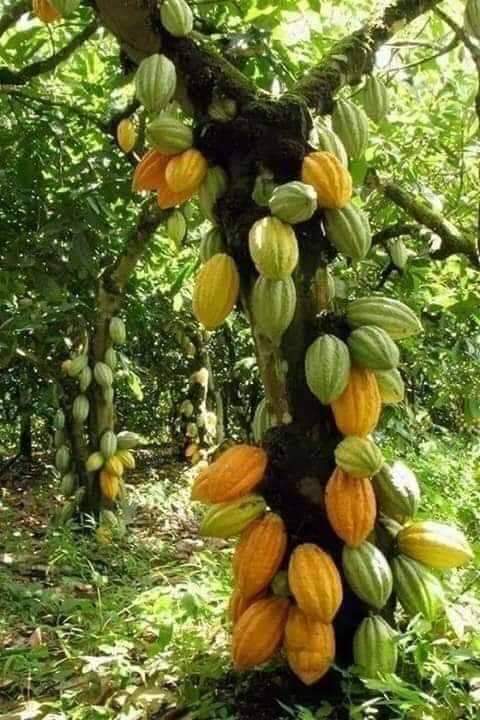The current price of cocoa in the international market is about $2337.36 per tonne (about N1,400,000). Having two hectares of cocoa farmland and getting three tonnes per annum mean sustainability and a reliable source of income. This income could be a seed capital for bigger agribusiness.
A medium cocoa production business, from the start to the sale of 500 bags of cocoa. The Capital covers from store set-up, land acquisition, seed purchase, production, and marketing.
Locally, the selling price of cocoa is the same almost everywhere. Each bag (A standard of 50 Kg) is being sold for about N55,000.
For a start, all the materials needed (Renting a store depends on location, purchase of needed equipments, planting and tendering, and so on, is approximately N3,500,000)
If you start harvesting after 18 months, (you can start harvesting as soon as that if you’ve planted the early-maturing, high-yielding and disease resistant cocoa beans seed to boost your farm’s production in a short period of time).
N55,000 X 500 = N27,500,000ROI = N27,500,000 – N3,500,000 After 18 months of cultivation, the gain was a staggering N24,000,000; which isn’t bad at all especially since selling cocoa beans seed doesn’t take much marketing. In fact, you can sell all off in less than one month.
Let’s briefly look at the RISKS involved in
Cocoa Production.
Risks involved in cocoa production
• Managing a cocoa farm takes time, effort, patience and energy.
• Constant guard and protective measure against rodents and infectious parasites.
• Setting up a cocoa production plant is very capital intensive.
In view of these risks involved, it is recommended that before venturing into cocoa farming you first undertake some few months of apprenticeship under a successful Cocoa farmer to gain a good understanding of the involvements and strategies that will help you mitigate the risks.
Advantages of cocoa production
• Cocoa sells faster than almost every other agricultural produce.
• You would inadvertently be contributing to the nations GDP.
• A lot of beverage companies rely on cocoa for the production, making it very profitable.
• As a young person, you can leave the circle of the unemployed.
• The ROI from cocoa and production is very attractive and is enough compensation for your time, energy and money.
Some young people, especially graduates, see cocoa farming as a poorly rewarding business meant for only the aged people who have resigned to fate.
They think farmers, and by extension cocoa producers, have nothing else to show for their labour and drudgery except a beggarly existence.
These perceptions are not only false but also far from the truth. Appearance is actually different from reality.
While it is true that most farmers appear poor, and their illiteracy prevents them from innovative management of their agribusinesses, it is a wrong perception thinking they all drag out a miserable existence.
As a matter of fact, many cocoa farmers in Nigeria are well-to-do, able to live decent and honest lifestyles that are not in any way inferior to those in other professions.
REQUIREMENTS FOR COCOA FARMING IN NIGERIA
The major requirements border on
Land acquisition, preparation and transplanting
Cocoa grows well in the rain forest ecologies, and over 14 states of the country are suitable for its production, including Taraba and Zamfara. Land acquisition either by purchase or leasing in cocoa growing areas is the first step.
Cocoa is a perennial crop (able to last and fruit for over 70 years), and this should, therefore, be considered while negotiating for land.
So buying the land is better than leasing it, for the land owners might fail to renew the lease while the cocoa trees are still prolific.
It could also lead to an abnormal increase of leasing fees, knowing the helplessness of the farmer.
Land preparation for a cocoa plantation is technical. Cocoa trees do not survive under scorching sunlight, but do under some trees. They equally grow poorly under heavy shadows.
Therefore, clearing the land demands that smaller forest trees are left at the spacing of about four metres apart to serve as covers for cocoa seedlings.
In some arable farmlands where annual crops are already being planted, intercropping with cassava would give cocoa seedlings some protective shades.
Plant population, improved seedlings and sources
Maximising the plant population in a cocoa plantation is economical. It helps a farmer to harvest optimal yields each cycle and prevents weed infestations and the attendant cost of controlling weeds.
About 1,000 to 1,200 cocoa trees grow per hectare, meaning an average of between 400 and 500 cocoa trees per acre of land.
To maintain 1,200 trees at the point fruiting, no fewer than 1,500 seedlings should be planted on one hectare to take care of trees that would not survive.
Experts on current improved varieties available in Nigeria, recommend that cocoa should be planted using three metre by three metre spacing (or 10x10feet) apart. That will give a plant population of about 1,111.
The features of the improved varieties include early maturity, pest resistance and higher yields, compared with the old varieties.
Developed by scientists at the Cocoa Research Institute of Nigeria (CRIN), the varieties start fruiting in 18 months, and first harvest of about 300 kilos per hectare is usually recorded by 30th month, while the old varieties start fruiting at four years or more.
